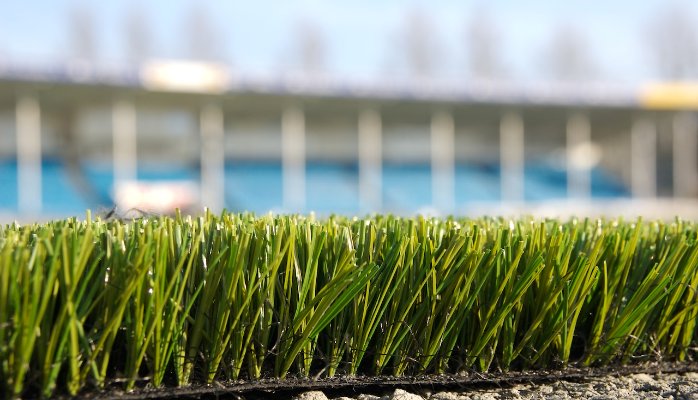“It is what it is.”
That’s what U.S. women’s national soccer team members Abby Wambach and Carli Lloyd had to say in regards to the field conditions at this year’s women’s World Cup in Canada. It’s not that the fields are in disastrous condition, or that they have been augmented them in any way. What Lloyd and Wambach were referring to was the pitch in its pristine shape before the tournament kicked off. That’s because this year’s World Cup is being played on artificial turf.
Turf is far from new to any sports fan. Since 1966 when AstroTurf came to the Houston Astrodome, stadiums and fields across the world took to the artificial trend. The move came mostly in part to turf’s significantly cheaper cost over maintaining natural grass fields. However, other attractive selling points like lower maintenance and a few other limitations allowed turf to literally roll across the sporting world. While the reduced prices brought smiles to owners’ faces, it came with significant drawbacks that continue to plague the sporting world of all skill levels.
If you grew up following sports in turf’s earlier days, you remember how likely it was to see a few athletes go down each season with horrific knee, ankle and leg injuries. Today, turf is in the third or fourth cycle of its evolution–reducing some of those injuries. Even with these changes, however, lower extremity injuries are still more likely to occur on the fake surfaces.
To counter this, FieldTurf grew out of the late ‘80s and early ‘90s. With turf that is much more similar to grass, FieldTurf now holds a market share of 85 percent over other artificial fields. While this has provided athletes with softer surfaces to ease back and leg injury fears, turf still is dangerous to the body. Even with today’s modern advancements, players are actually being ripped to shreds on the field.
We’ll get back to soccer in a moment, but think about football first. Multiple studies have linked today’s common turf with an incredible spike in knee injuries, primarily ACL, at around two-thirds more than natural grass fields. If you watch a few NFL games in a single week, look at the player’s pants by the end of the game. There is a good chance you will see blood coming through their pants in copious amounts. Additionally so, try to count how many running backs and wide receivers go down with knee injuries. The numbers may surprise even the most dedicated fan.
Taking it back to the comments from the women’s national team, we are seeing horrifying injuries on the pitch. Legs are ripped apart. Players are forced to decide if risking their bodies for a goal is worth having to deal with multiple body parts torn open by the unforgiving fields. That’s why Wambach doubled down on her comments by calling the turf surfaces “a nightmare.” Thanks to global pressure by the women, FIFA ensured this will be the last World Cup ever held on turf.
Beyond skin, an athlete’s physical well being is in increased danger when playing on turf in the summer. Turf fields are sweltering, often exceeding 120 degrees Fahrenheit at game time–something natural grass doesn’t do. Partnering that with increased fatigue levels on turf and we are creating a recipe for grave injuries to occur. Hopefully it will never happen, but a death on the field due to overheating could happen.
While advancements in artificial turf signify a continued evolution from its beginning in 1966, much more room for improvement remains. Regardless of being a cost efficient measure, player safety has to remain the utmost concern. That goes beyond professionals and onto the amateurs at the collegiate, high school, grade school and even intramural levels. In the 49 years that artificial turf has been present in sports, is there still time for evolution or should owners consider eating the cost and switching back to natural grass?
For now, all we have are the thoughts of the national team to address the matter.
“It is what it is.”
This article originally appeared on Thane Ritchie’s LinkedIn on June 15, 2015.

